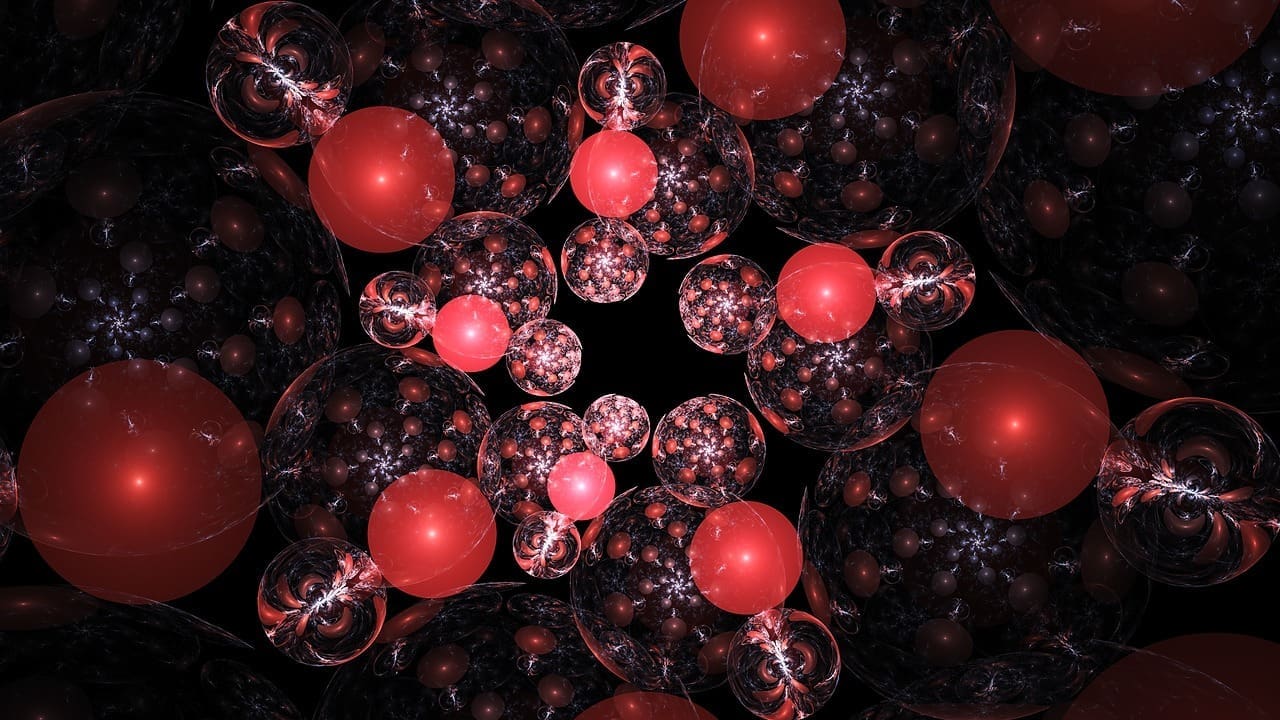Last Updated on November 26, 2025 by Bilal Hasdemir

At Liv Hospital, we believe in giving patients the knowledge they need. Alkylating chemotherapy drugs are key in fighting cancer. They damage the DNA of fast-growing cells, stopping tumors from growing.
We use alkylating agents in our cancer treatment plans. These agents attach an alkyl group to cancer cells’ DNA. This stops them from copying themselves and leads to their death.
We’re dedicated to top-notch, patient-focused care in cancer treatment. We make sure patients get the best care with kindness and skill.
Key Takeaways
- Alkylating agents are a class of chemotherapy drugs used to treat various cancers.
- These drugs work by damaging the DNA of rapidly dividing cancer cells.
- Liv Hospital provides comprehensive cancer care, using alkylating chemotherapy drugs in treatment plans.
- Our approach is centered on delivering high-quality, patient-centered care.
- Understanding alkylating chemotherapy drugs can empower patients to make informed treatment decisions.
Understanding Alkylating Drugs in Cancer Treatment
Alkylating agents are key in fighting cancer. They add alkyl groups to DNA, causing damage. This damage stops cancer cells from growing and leads to their death.
Exploring alkylating chemotherapy helps us see how these drugs fight cancer. For decades, they’ve been a mainstay in cancer treatment. They are a powerful tool in our battle against cancer.
What Are Alkylating Agents?
Definition and Classification
Alkylating agents are drugs that damage cancer cells’ DNA. This damage stops cancer cells from copying themselves, leading to their death. These drugs are divided into groups like nitrogen mustards and platinum-based compounds.
These drugs are classified by their structure and how they work. Examples include cyclophosphamide and melphalan. They treat many cancers, like leukemias and lymphomas.
Role in Cancer Therapy
Alkylating agents are vital in cancer treatment. They can be used alone or with other drugs to make treatment more effective. They are a key part of our fight against cancer.
A study in the Journal of Clinical Oncology found they improve survival rates. They also help in shrinking tumors and increasing response rates.
“Alkylating agents have revolutionized the treatment of various cancers, giving new hope to patients and doctors.”
To show the different types of alkylating agents and their uses, let’s look at a table:
| Alkylating Agent | Cancer Type | Common Use |
|---|---|---|
| Cyclophosphamide | Lymphoma, Leukemia | Conditioning regimen for bone marrow transplantation |
| Melphalan | Multiple Myeloma | High-dose chemotherapy for multiple myeloma |
| Busulfan | Chronic Myeloid Leukemia | Conditioning regimen for bone marrow transplantation |
In conclusion, alkylating agents are essential in cancer treatment. They offer a powerful way to fight cancer. Understanding how they work and their role in cancer therapy highlights their importance in modern oncology.
Mechanism of Action: How Alkylating Agents Combat Cancer
Alkylating agents are a key part of cancer treatment. They work by damaging the DNA in cancer cells. This damage stops the cells from copying themselves and leads to their death.
“The alkylation of DNA is a critical step in the mechanism of action of these drugs,” experts say. This means adding an alkyl group to DNA, creating DNA adducts.
DNA Alkylation Process
The DNA alkylation process is complex. It starts with the addition of alkyl groups to DNA bases. This is how alkylating agents affect DNA.
Addition of Alkyl Groups to DNA Bases
Alkylating agents add alkyl groups to DNA bases, like guanine and adenine. This can cause miscoding during DNA replication. This leads to mutations that harm cancer cells.
DNA Crosslinking and Replication Interference
The addition of alkyl groups can also cause DNA crosslinking. This links two DNA strands together. It stops cancer cells from dividing and growing. This leads to cell death, or apoptosis.
The way alkylating agents work is complex. They disrupt DNA replication and function. Understanding this helps us see how these drugs fight cancer and help patients.
Cyclophosphamide: The Most Widely Used Alkylating Drug
Cyclophosphamide is a top choice for fighting cancer. It’s used in many chemotherapy plans to treat different cancers. Let’s look at how it helps with various types of cancer.
Clinical Applications of Cyclophosphamide
Cyclophosphamide is a key drug in cancer treatment. It works well on both blood cancers and solid tumors.
Treatment of Leukemias and Lymphomas
Cyclophosphamide is great for treating blood cancers like leukemias and lymphomas. It’s often mixed with other drugs to boost its power. Some benefits include:
- High response rates in patients with certain types of lymphomas
- Ability to induce remission in leukemia patients
- Flexibility in dosing regimens to accommodate different patient needs
Role in Solid Tumor Management
Cyclophosphamide also helps with solid tumors. It’s part of treatments for breast and ovarian cancers. Its ability to target fast-growing cells makes it effective.
Understanding cyclophosphamide’s role in cancer treatment shows its importance. Its flexibility and effectiveness make it a key drug in fighting cancer.
Melphalan: A Key Agent in Multiple Myeloma Treatment
Melphalan is a key drug in fighting multiple myeloma. It targets cancer cells in a specific way. Melphalan adds an alkyl group to DNA, stopping cancer cells from growing and killing them.
Melphalan’s Unique Properties
Melphalan is effective against multiple myeloma because of its special traits. It can find and attack plasma cells, the main cancer cells in this disease.
Chemical Structure and Pharmacokinetics
Melphalan’s design helps it work well against cancer. It can be taken by mouth or through an IV. It spreads through the body, reaching the bone marrow where cancer cells live.
Selectivity for Plasma Cells
Melphalan is good at finding and attacking plasma cells. This helps protect other healthy cells, reducing side effects. Its ability to target plasma cells makes it a key treatment for multiple myeloma.
Understanding melphalan’s special features helps us see its importance in treating multiple myeloma. As an example of alkylating agents, melphalan shows how these drugs are vital in cancer treatment.
Busulfan: Essential for Bone Marrow Transplantation
The alkylating agent busulfan is key in getting patients ready for bone marrow transplants. It gets rid of the old bone marrow.
Busulfan is great at clearing out the old bone marrow. This makes space for new marrow from the donor.
Busulfan’s Role in Conditioning Regimens
Busulfan is given in big doses to prepare the body for a transplant. It helps get rid of the old bone marrow.
Myeloablative Properties
Busulfan’s power to kill cells is vital. It gets rid of bad cells and stops the body from rejecting the new marrow.
Synergy with Other Agents
Busulfan works best when paired with other drugs, like cyclophosphamide. Together, they make the treatment stronger.
Here’s a quick look at what makes busulfan special and its role in bone marrow transplants:
| Property | Description | Benefit in Bone Marrow Transplantation |
|---|---|---|
| Myeloablative | Eliminates existing bone marrow | Makes room for donor marrow |
| Synergistic | Works with other agents like cyclophosphamide | Enhances conditioning regimen effectiveness |
| Alkylating Agent | Damages DNA of cancer cells | Reduces risk of cancer recurrence |
Knowing how busulfan works helps doctors use it better. This can lead to better results for patients getting bone marrow transplants.
Carmustine and Lomustine: Nitrosoureas in Brain Cancer Treatment
Nitrosoureas, like carmustine and lomustine, are key in fighting brain cancer. They work well because they can get past the blood-brain barrier. This is important for treating brain tumors.
We choose these drugs because they can target brain cancer cells well.
Blood-Brain Barrier Penetration
Carmustine and lomustine are good at treating brain cancers because they can get through the blood-brain barrier. This lets them hit and kill tumor cells that other drugs can’t reach.
Lipophilic Properties
The fat-loving nature of nitrosoureas like carmustine and lomustine helps them get through the blood-brain barrier. This is key for their success in fighting brain tumors.
Delivery Systems and Implants
To get carmustine straight to brain tumors, implantable devices like Gliadel wafers are used. These implants release carmustine right into the tumor. This boosts the drug’s effect and cuts down on side effects. For more on carmustine and its uses, check out this resource.
Using these advanced delivery methods, we can make carmustine and lomustine more effective against brain cancers. This gives patients with these tough conditions new hope.
Cisplatin and Carboplatin: Platinum-Based Alkylating-Like Agents
Platinum-based agents like cisplatin and carboplatin are key in cancer treatment today. They are used for cancers such as ovarian, testicular, lung, and bladder. Even though they’re not traditional alkylating agents, they work in a similar way.
Cisplatin and carboplatin are used in chemotherapy. They create DNA adducts, which kill cancer cells. Knowing how they work helps us use them better in cancer treatment.
Mechanism Differences from Classical Alkylating Agents
Cisplatin and carboplatin aren’t true alkylating agents. Yet, they damage DNA like alkylating agents do. Their main difference is in how they act.
DNA Adduct Formation
Cisplatin and carboplatin bind to DNA, mainly at guanine’s N7 position. This creates crosslinks that distort DNA. These distortions stop DNA from replicating and transcribing, leading to cell death.
Cellular Response to Platinum Compounds
The body reacts to cisplatin and carboplatin in complex ways. It recognizes DNA damage, stops cell division, and can kill cells. This process is key to their effectiveness.
In summary, cisplatin and carboplatin are essential in chemotherapy. They kill cancer cells by damaging DNA. Knowing how they work helps us use them well and manage side effects.
Managing Side Effects of Alkylating Chemotherapy
Managing side effects from alkylating chemotherapy is key for patients’ well-being. These agents fight cancer but can harm patients’ quality of life.
“The management of chemotherapy-induced side effects is a critical component of cancer care,” say healthcare experts. We’ll look at ways to lessen these effects, focusing on immediate toxicities.
Acute Toxicities and Their Management
Side effects from alkylating chemotherapy include myelosuppression, nausea, vomiting, and damage to specific organs. It’s vital to manage these to avoid complications and keep treatment on track.
Myelosuppression and Infection Risk
Myelosuppression, a common side effect, lowers blood cells. This raises the risk of infections, anemia, and bleeding. Granulocyte-colony stimulating factor (G-CSF) helps by boosting white blood cells and lowering infection risk.
Nausea and vomiting are common and affect patients’ quality of life. Antiemetic medications help prevent and treat these symptoms. Adjusting diet and staying hydrated also helps manage these issues.
“The use of antiemetic therapy has revolutionized the management of chemotherapy-induced nausea and vomiting, significantly improving patient outcomes.”
Organ-Specific Toxicities
Alkylating agents can harm specific organs like the kidneys, bladder, and heart. For instance, cyclophosphamide can cause bladder bleeding. Monitoring and using mesna can reduce these risks.
Understanding and tackling alkylating chemotherapy side effects is essential. Healthcare providers can enhance patient outcomes and quality of life. Effective management is vital for supporting patients through their treatment.
Conclusion: The Evolving Role of Alkylating Agents in Modern Oncology
Alkylating agents are key in fighting cancer, helping treat many types of the disease. We’ve looked at the different kinds, how they work, and their use in cancer treatment.
Today, using alkylating agents in cancer care is getting better. Scientists are working hard to make them more effective and less harmful. This makes treatment more targeted and better for patients.
As we move forward in cancer treatment, alkylating agents will keep being important. They can damage DNA and kill cancer cells, helping fight many cancers. We’re dedicated to top-notch healthcare for everyone, including international patients.
Understanding alkylating agents helps us see the complexity of modern cancer care. They will keep being a big part of fighting cancer in the future.
FAQ
What are alkylating agents and how do they work in cancer treatment?
Alkylating agents are a type of chemotherapy drug. They damage the DNA of cancer cells, stopping them from copying. We use these drugs to treat many cancers, like leukemias and solid tumors.
What is the mechanism of action of alkylating agents?
These agents add alkyl groups to DNA bases. This stops DNA replication and leads to cell death. It’s key in stopping cancer cells from growing.
What are some common examples of alkylating chemotherapy drugs?
Common alkylating agents include cyclophosphamide and melphalan. Others are busulfan, carmustine, lomustine, cisplatin, and carboplatin. We use them to treat many cancers, from leukemias to brain tumors.
How does cyclophosphamide work and what is it used for?
Cyclophosphamide is a widely used alkylating agent. It treats various cancers, like leukemias and solid tumors. It damages cancer cells’ DNA, stopping them from copying.
What is melphalan used for and what are its unique properties?
Melphalan is key in treating multiple myeloma. Its unique structure and selectivity for plasma cells make it effective.
What is the role of busulfan in bone marrow transplantation?
Busulfan is vital in bone marrow transplantation. It prepares patients by destroying their bone marrow. Its myeloablative properties are key in conditioning regimens.
How do carmustine and lomustine work in brain cancer treatment?
Carmustine and lomustine are used for brain cancers. They can cross the blood-brain barrier. Their lipophilic properties help target brain tumors.
What are the differences between cisplatin and carboplatin and classical alkylating agents?
Cisplatin and carboplatin are platinum-based agents. They form DNA adducts, unlike classical alkylating agents. This makes them effective in treating cancers.
How are side effects of alkylating chemotherapy managed?
We manage side effects by reducing acute toxicities like myelosuppression and nausea. Supportive care is key in minimizing these effects.
What is the future of alkylating agents in cancer treatment?
Alkylating agents remain vital in cancer treatment. Research aims to improve their effectiveness and reduce side effects
References
- National Center for Biotechnology Information (NCBI) / Books: https://www.ncbi.nlm.nih.gov/books/NBK547849/
- DrugBank: https://go.drugbank.com/categories/DBCAT003311
- Osmosis: https://www.osmosis.org/learn/Alkylating_agents:_Nursing_Pharmacology
- GoodRx: https://www.goodrx.com/classes/alkylating-drugs
- Wikipedia: https://en.wikipedia.org/wiki/Alkylating_antineoplastic_agent








